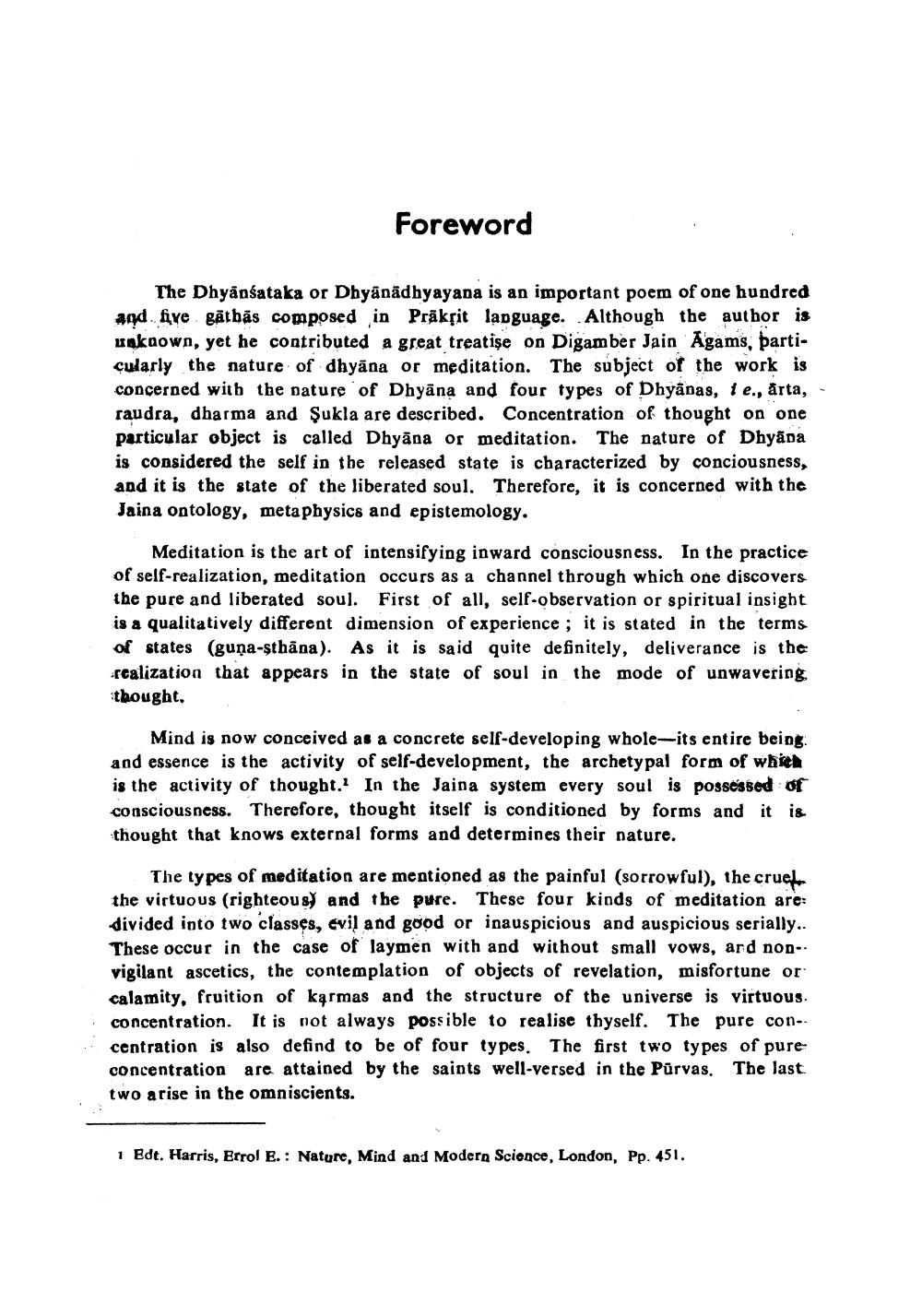Book Title: Dhyanhatak Tatha Dhyanstava Author(s): Haribhadrasuri, Bhaskarnandi, Balchandra Siddhantshastri Publisher: Veer Seva Mandir View full book textPage 9
________________ Foreword The Dhyanśataka or Dbyānädhyayana is an important poem of one hundred and five gathās composed in Prākşit language. Although the author is uakaown, yet he contributed a great treatise on Digamber Jain Agams, particularly the nature of dhyāna or meditation. The subject of the work is concerned with the nature of Dhyāna and four types of Dhyānas, i e., arta, raudra, dharma and Sukla are described. Concentration of thought on one particular object is called Dhyāna or meditation. The nature of Dhyāna is considered the self in the released state is characterized by conciousness, and it is the state of the liberated soul. Therefore, it is concerned with the Jaina ontology, metaphysics and epistemology. Meditation is the art of intensifying inward consciousness. In the practice of self-realization, meditation occurs as a channel through which one discovers the pure and liberated soul. First of all, self-observation or spiritual insight is a qualitatively different dimension of experience ; it is stated in the terms. of states (guņa-sthāna). As it is said quite definitely, deliverance is the realization that appears in the state of soul in the mode of unwavering thought, Mind is now conceived as a concrete self-developing whole-its entire being and essence is the activity of self-development, the archetypal form of which is the activity of thought. In the Jaina system every soul is possessed of consciousness. Therefore, thought itself is conditioned by forms and it is. thought that knows external forms and determines their nature. The types of meditation are mentioned as the painful (sorrowful), the cruel the virtuous (righteous) and the pure. These four kinds of meditation are: divided into two classes, evil and good or inauspicious and auspicious serially.. These occur in the case of laymen with and without small vows, and nonvigilant ascetics, the contemplation of objects of revelation, misfortune or calamity, fruition of karmas and the structure of the universe is virtuous. concentration. It is not always possible to realise thyself. The pure con-- centration is also defind to be of four types. The first two types of pure concentration are attained by the saints well-versed in the Purvas. The last two arise in the omniscients. 1 Bdt. Harris, Errol e.: Nature, Mind and Modern Science, London, Pp. 451.Page Navigation
1 ... 7 8 9 10 11 12 13 14 15 16 17 18 19 20 21 22 23 24 25 26 27 28 29 30 31 32 33 34 35 36 37 38 39 40 41 42 43 44 45 46 47 48 49 50 51 52 53 54 55 56 57 58 59 60 61 62 63 64 65 66 67 68 69 70 71 72 73 74 75 76 77 78 79 80 81 82 83 84 85 86 87 88 89 90 91 92 ... 200
